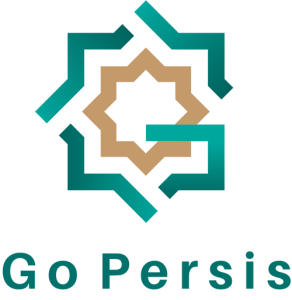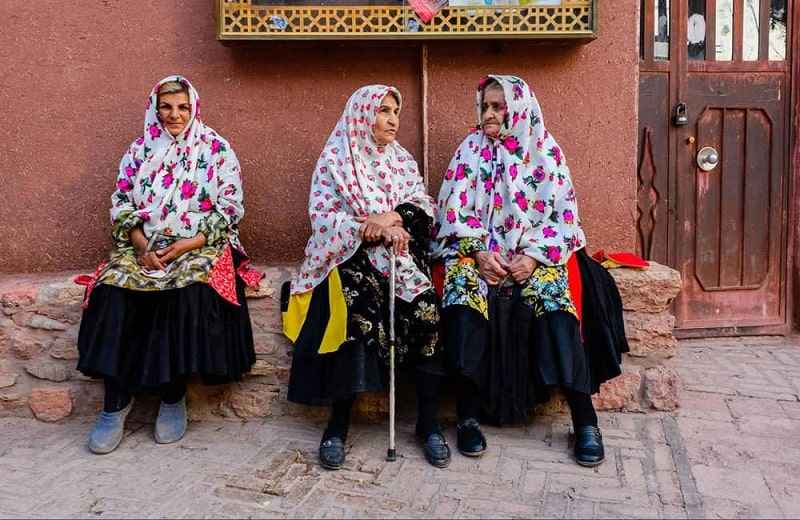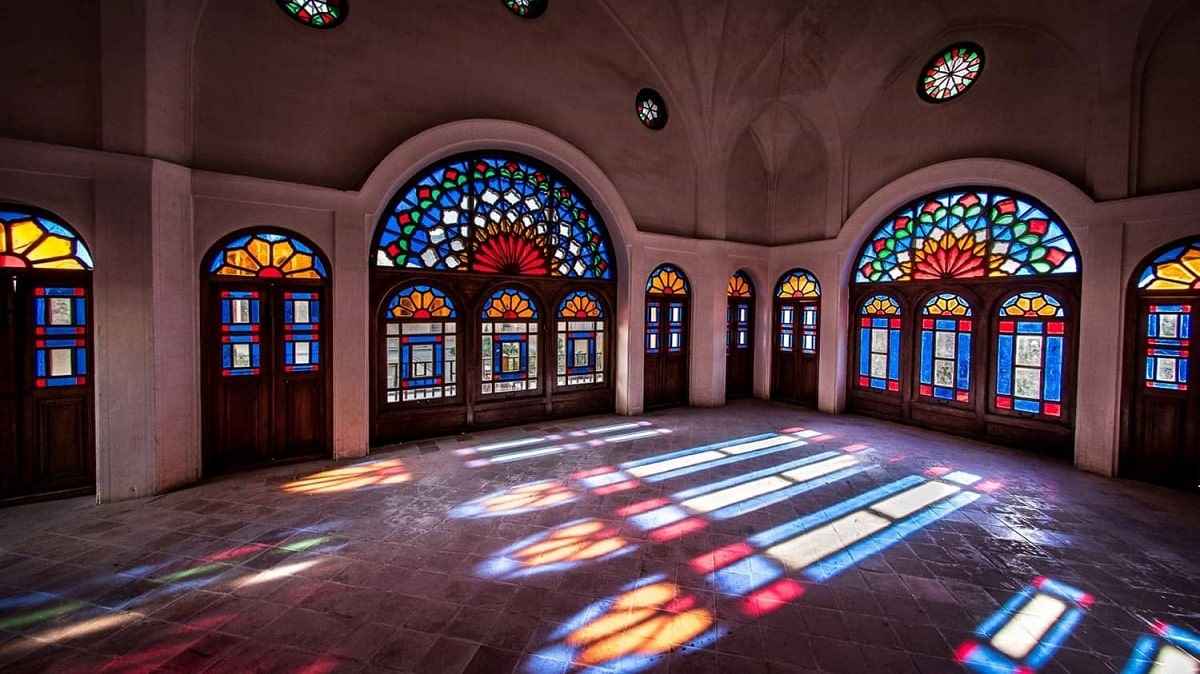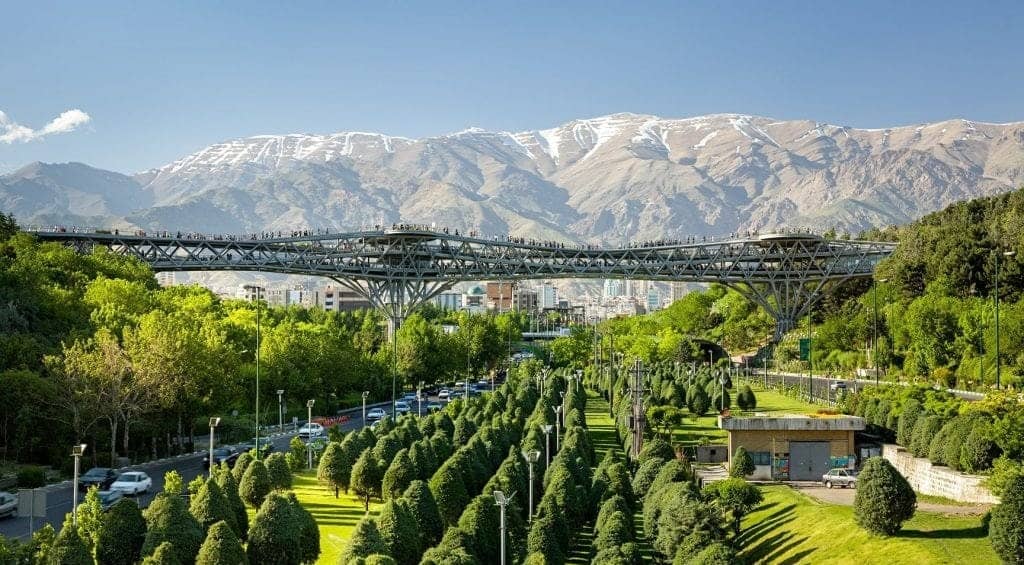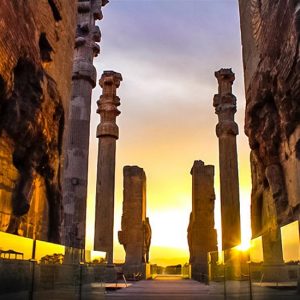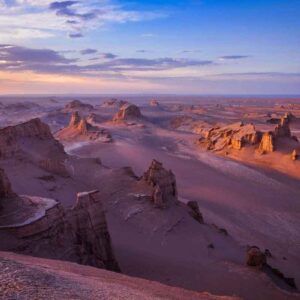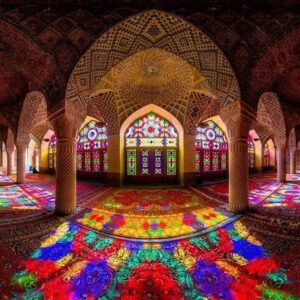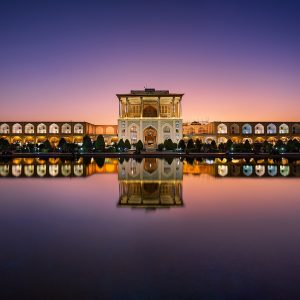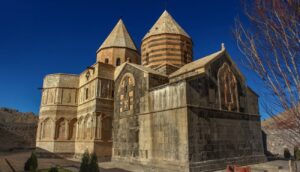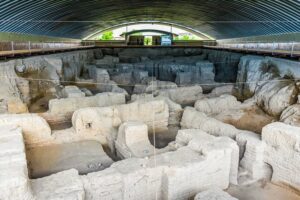Day 1: Tehran (Arrival), Iran Women Only Tour Starts with Pahlavi Queen Heritage
- Arrival at IKI Airport, Visiting Tehran, O/N Tehran.
- – Visiting Azadi Tower, Visiting Carpet Museum, Visirting Contemporary Art Museum. (Attention: The priority in sightseeing would change due to the time of your arrival.)
At the time of arrival at IKA airport, our representative will welcome you and guide you to the hotel. After that, you leave the hassle of flight under the shower and relax before the tour of Tehran Treasure begins.
Iran Women Only Tour starts with the Azadi Tower as a symbol of modern Tehran and the contemporary national gate of Iran. After that, we will touch the Contemporary Art Museum to indulge ourselves in extending our knowledge of Persian modern arts. In addition, the museum contains the most valuable collection of Western art from Europe and America. Finally, we visit the National Carpet Museum, which shines for the collection of Persian carpets since 1500 years ago.
Overnight Tehran.
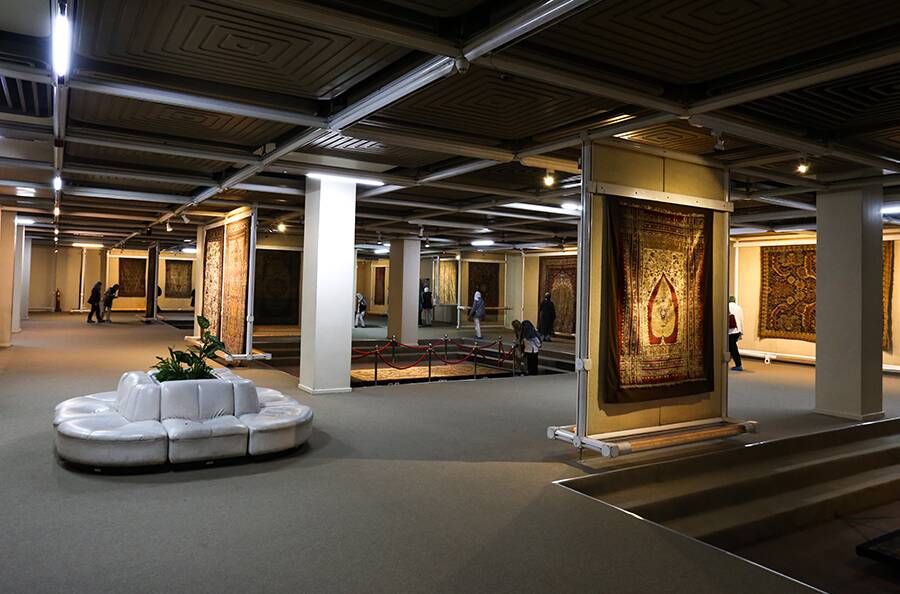
The Carpet Museum is the most distinctive gallery of Persian rugs. Farah Pahlavi ordered to building of the gallery to keep the heritage of Persian rugs alive.
Day 2: Tehran, Home of Empress Crown
- Visiting Tehran, O/N Tehran.
- Visiting Golestan Palace, Tehran Grand Bazaar, National Jewellery Museum, & Iran National Museum.
Iran Women Only Tour begins with Golestan Palace a royal complex over 400 years old. Golestan Palace shines with peculiar ornaments such as tiling, mirror-works, and paintings. The palace surpassed four kings of the Qajar and Pahlavi dynasties, who were crowned in its majesty. Golestan Palace distinguished itself as a Unesco World Heritage. Soon after that, we will overlook the Tehran Grand Bazaar. It is a roofed-up building with the old-time architecture of passages and pathways. The Bazaar leaves you in a puzzle as a cultural and economic center in the downtown of Tehran.
After that, we will visit the Iran National Museum which holds archaeological collections in two separate structures. Ancient Iran Museum and Museum of Islamic Period, which present you with the culture, art, and history of Persia. Then (Sat to Tue 14:30 to 16:30) walking to the Treasury of National Museum (National Jewelry Museum). The National Jewelry Museum shines on the beauty of the diamonds, jewels, and royal heritages, to feel the kingdom lifestyle better.
Overnight Tehran.
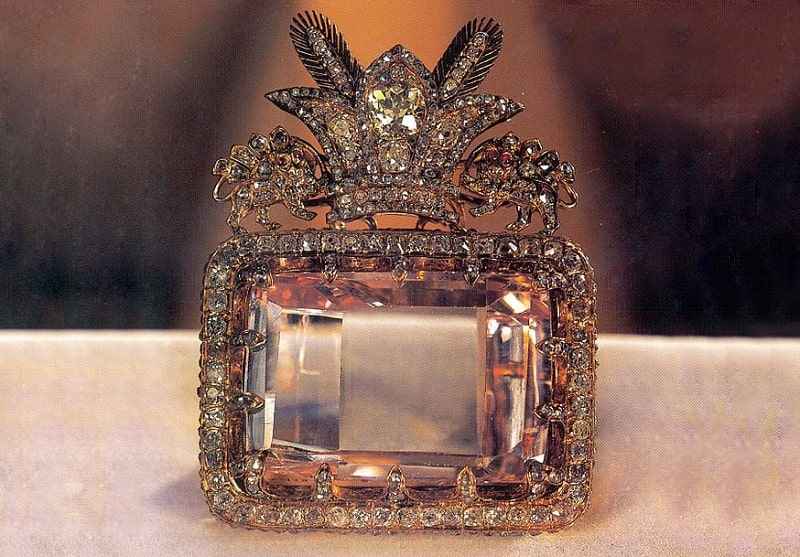
The National Jewelry Museum embraces the most eye-catching collections of gems and royal jewels. Those jewels are decorated with diamonds, gold, turquoise, and silver.
Day 3: Tehran- Kashan-Isfahan, Depiction of Love in Architecture
- Drive 450 km to Isfahan, O/N Isfahan.
- – Having an expedition to Kashan: Visiting Borujerdi House, Sultan Amir Ahmad Bathhouse, Tabatabai House, and Fin Garden.
Today, the Iran Women Only Tour embraces Kashan legacies on the way to Isfahan. Our journey begins with Fin Garden (UNESCO Heritage). Fin Garden depicts a genuine Persian garden, telling us stories about the contemporary era from the murder of Amir Kabir to the present. After that, we touch Boroujerdi House which combines the desert style of wind-catchers with Persian traditional models of an iwan. Boroujerdi House attracts your attention with superb plasterwork in interior and exterior decoration. The house was built to show the love of Mr. Boroujerdi to his ladylove. Soon after, we see Sultan Amir Ahmad Bathhouse to feel Persian architecture meanwhile bathing. Then, we walk to Tabatabaei House which includes peculiar stone reliefs, stucco, and colored glasses. Finally, drive to Isfahan to sense the beauty of royal arts.
Overnight Isfahan.
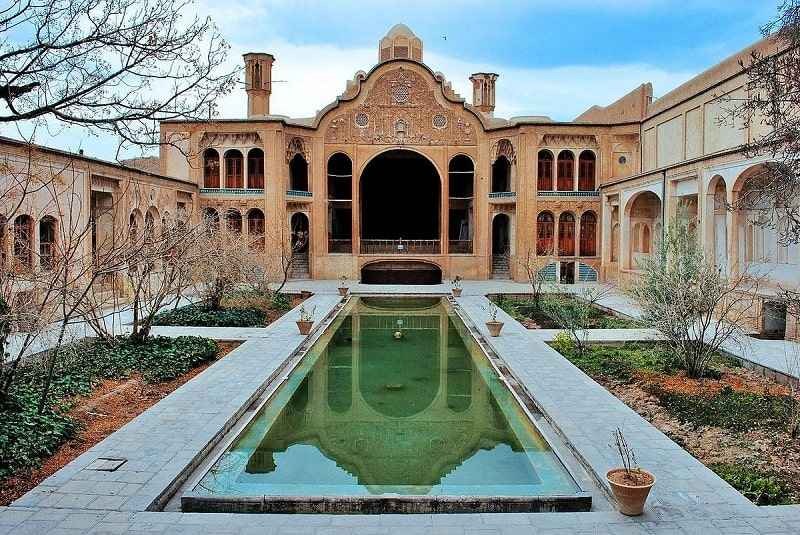
An architectural masterpiece dedicated to the love of a lady to show how invaluable Love can be.
Day 4: Isfahan, Princes Glories in Iran Women Only Tour
- Visiting Isfahan, O/N Isfahan.
- Visiting Qeisarie Gate, Naqshe Jahan Square (Meidan Emam: Sheikh Lotf Allah Mosque, Shah Mosque, Ali Qapu Palace). Chehel Sotun Palace (Bagh-e Chehel Sotun), Si-O-Se-Pol Bridge & Khaju Bridge.
Iran Women Only Tour in Isfahan begins with Qeisarie Gate which is a three-floor building. The gate directs us to Naqsh-e Jahan Square (Meidan Emam) to visit the masterwork of chief architect Sheikh Bahaee. Also, a workshop for Minakari demonstrates to us how Persians enamel objects to place heaven into them. In Minakari, artists decorate metal (mostly Silver and Copper) or tile with patterns and paintings. Soon after, we will touch Sheikh Lotfollah Mosque to be inspired by the genius interior and exterior decoration of the dome. After that, we will visit the Shah Mosque, which depicts Persian architecture in the Islamic era. Shah Mosque consists of iwans, domes, tilling, and supreme engineering of a voice echoing. Then, the Women Only trip will end at Ali Qapu Palace. Ali Qapu Palace is a gallery of art in terms of music, painting, and decoration in an acoustic structure.
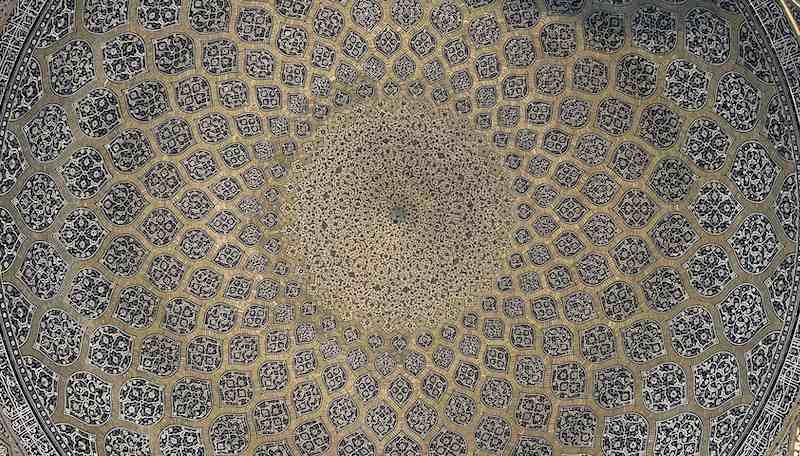
A royal court that is a Mosque nowadays was a sacred and private beauty for Shah Abbas’s harem ladies. By nourishing our minds in the square, we will walk to Chehel Sotun Palace (UNESCO Heritage). Chehel Sotun Garden with gorgeous paintings awaiting us with a palace pillar photo reflected into the front pond. Then, we travel to the white river to indulge ourselves in the beauty of the worldly Si-O Se Pol Bridge.
Overnight Isfahan.
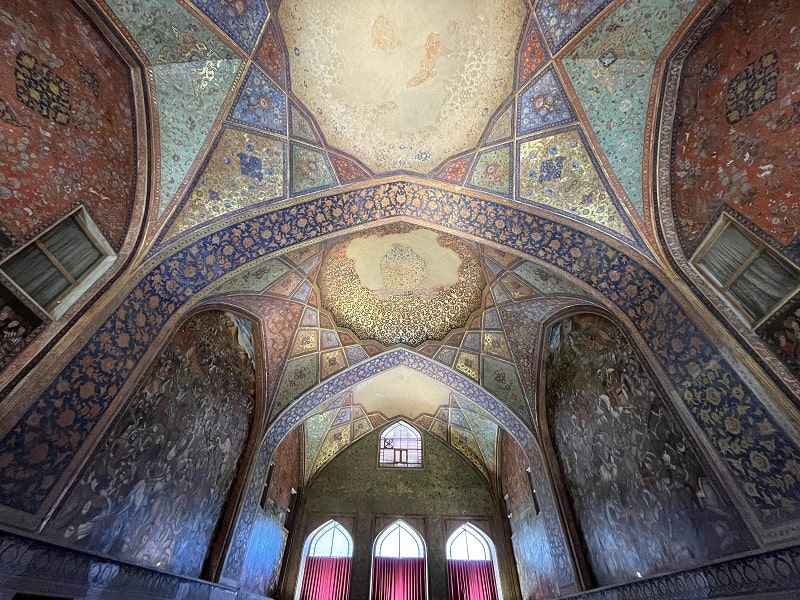
Chehel Sotun Palace displays royal artistic attitudes by building a mansion in the heart of the orchard.
Day 5: Isfahan, Magic of Art, Architecture and Handicrafts
- Visiting Isfahan, O/N Isfahan.
- Visiting Vank Cathedral, Isfahan Jame Mosque (Masjid-e Jame of Isfahan), Chahar Bagh Street, Hasht Behesht Palace & Having Pleasure at Your Pace.
Iran Women Only Tour includes Vank Cathedral with its fascinating paintings and mosque-like dome. Armenians who were forced to move to Isfahan by Shah Abbas Safavid constructed Vank Cathedral. After that, we will travel to Isfahan Jameh Mosque (UNESCO Heritage). Isfahan Jameh Mosque is one of the oldest kinds in Persia. Then, we learn how masters do Ghalamzani. Ghalamzani is a superb design on silver, copper, brass, and gold to place visionary engravings on objects.
Women Only exploration continues to Chahar Bagh Street which is a masterpiece of urbanism. Soon after, we walk to Hasht Behesht Palace which is a royal pavilion with glamorous paintings, woodwork, mirror-work, and tilling. Finally, we travel to the white river to indulge ourselves in the beauty of the world known as Khaju Bridge.
Overnight Isfahan.
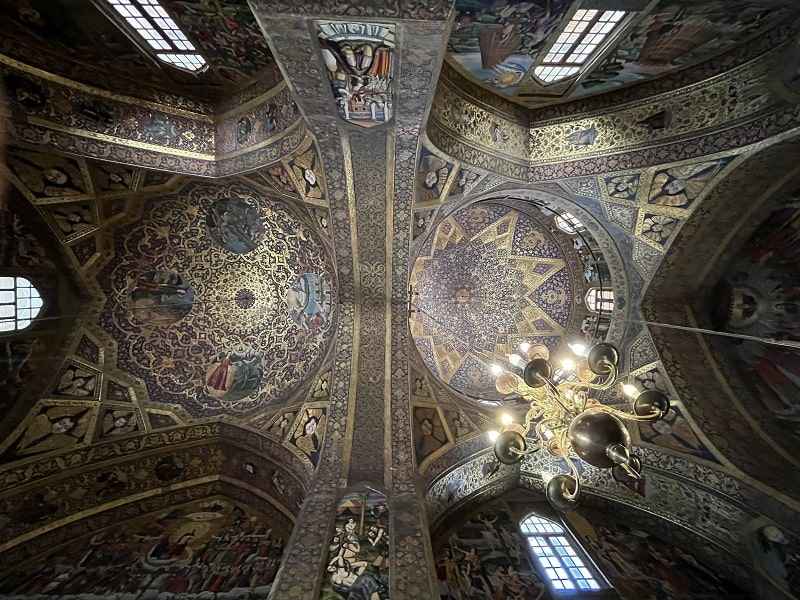
Vank Cathedral is a wall-painting collection depicting Christian stories by Armenian beliefs in the Julfa area of Isfahan.
Day 6: Isfahan-Shiraz, The Great Son of Mom and Man of Love
- Drive 440 km to Shiraz, O/N Shiraz.
- Having an expedition to Izadkhast Castle and Global City of Wood-Carvings.
- Visiting Pasargadae, Qu’ran Gate and Tomb of Khwaju.
We embark on a full-day travel to Shiraz by having a deep expedition to IzadKhast Complex. Sassanid empire built the IzadKhast Complex as an adobe structure. The complex includes a fortress, fire temple, caravansary, bathroom, and the city of IzadKhast. After that, the Global City of Wood Carvings (Monabatkari or Moghaarkari) awaits us. In Monabatkari or Moghaarkari, professionals replete woods with religious designs or flower motifs in their workplace.
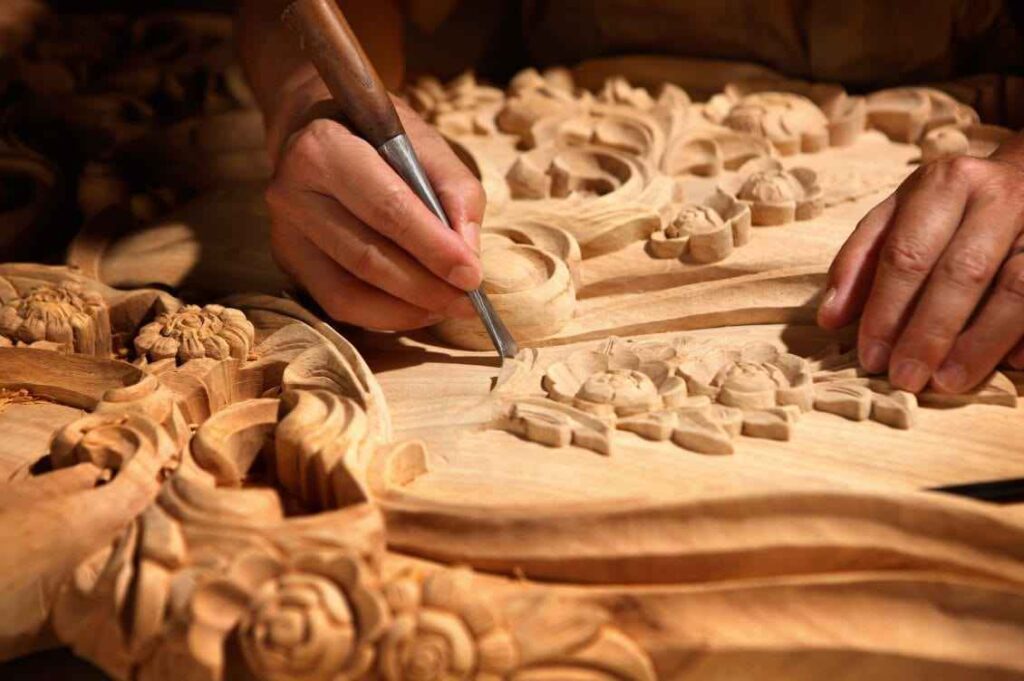
Monabatkari or wood-carving distinguished art is a masterpiece crafted by hammer and cave out of walnut and beech wood trees. Then, we will have an expedition to Pasargadae, the ancient capital of Achaemenid, and the tomb of Cyrus the Great. Cyrus the Great ordered to building of the tomb with the famous fourfold Persian model of the garden. Then, we will have a glance at Quran Gate, which is the north entrance gate of Shiraz. Zand dynasty was the gate to bless passengers by the holiness of the Quran. Next to the gate is the Tomb of Khwaju, who was the guru in literature, and also a guide to Hafiz.
Overnight Shiraz.
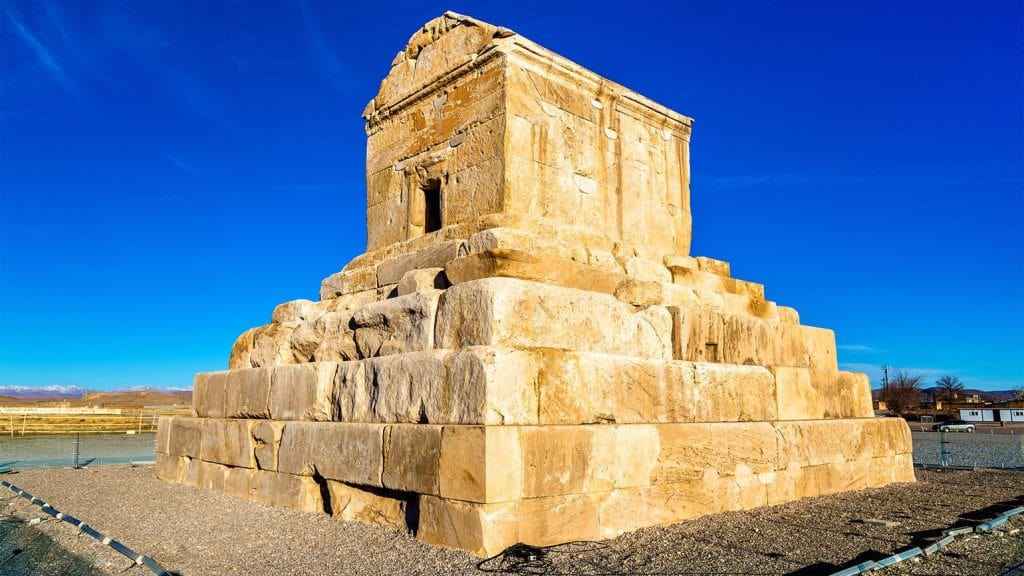
Pasargadae ancient city embraces Cyrus the Great Tomb, Pasargadae Garden, and the Prison of Solomon. It demonstrates better detail about the first king of the Achaemenid empire and the urban structure of the time.
Day 7: Shiraz, Iran Women Only Tour Embraces Capital of a Cradle of Civilization
- Visiting Shiraz, O/N Shiraz.
- Nasir-Almolk Mosque (Pink Mosque), Zinat Al-Molk House, Atiqe Mosque & Shahcheragh Holy Shrine, Eram Garden, and Hafez Mausoleum.
Today, the Iran Women Only Tour devotes itself to the beauty of Shiraz. First, we will visit Nasir-ol-Molk, a supreme intellectual and artistic sacred place that proves no comparison with a typical mosque. Spirituality lies inside when sunshine passes through the colorful glasses of windows to Persian carpet orchards. Also, the superb ceiling ceramic work dazzles visitors’ eyes in the Nasir-al-Molk Mosque. Then, we walk to Qavam House, a unique model of Persian architecture. It not only surprises you in the garden but also with gorgeous mirror-works and European style of paintings. Further to the usual monuments, we will experience Shahcheragh, the third holiest shrine in Persia. Shahcheragh with a feeling of spirituality takes you out of the worldly tension.
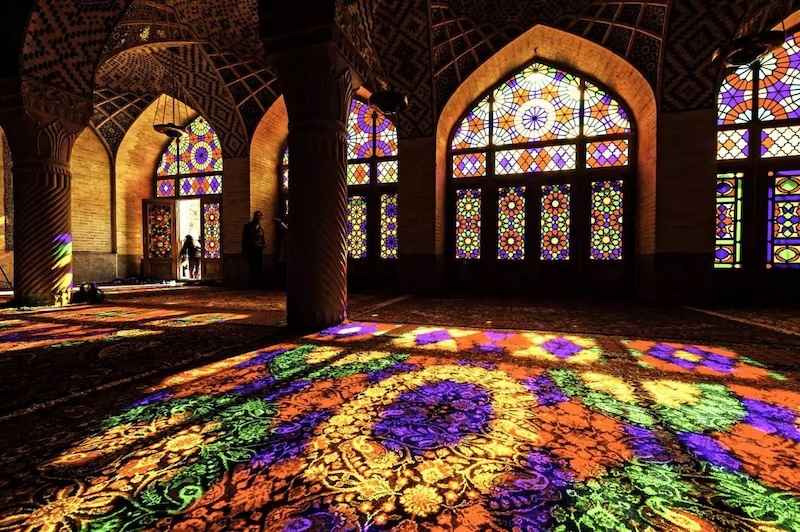
Orsi Windows with Stained Glasses Inviting Many Colors to the Mosque. After lunch, we embrace Eram Garden, the original meaning of Paradise (UNESCO Heritage). Eram Garden displays Persia’s peculiar structure in magnificent buildings and a botanical garden. Then, we visit Hafezieh, the mausoleum of a poet whose love stories, spiritual beliefs, and sagacious poems alleviate readers. Hafiz Ghazal by the use of eloquence inspired Persians to fall in love, be honest, and worship Allah.
Overnight Shiraz.
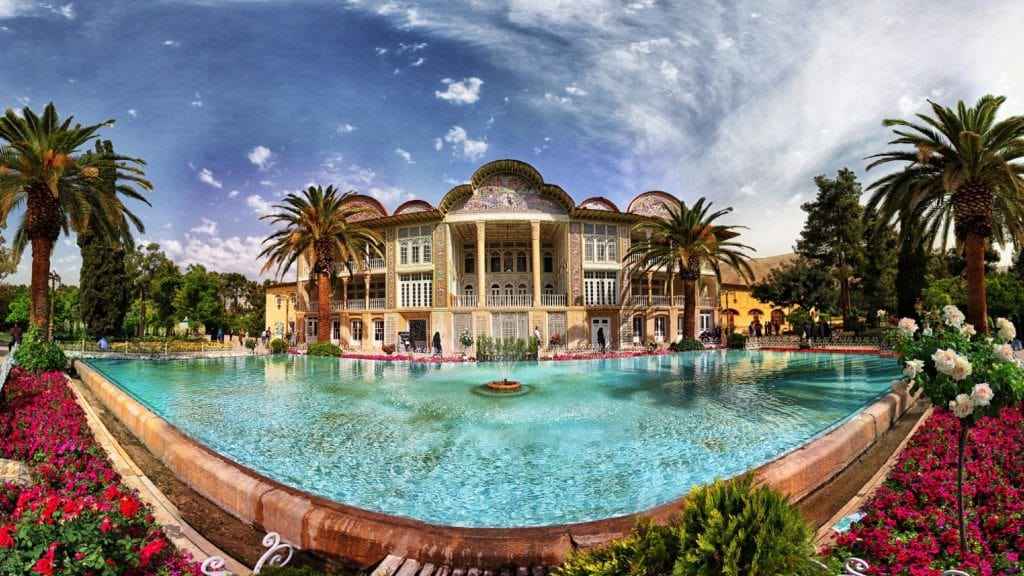
Eram Garden is a real meaning of the Persian word “Pardis” (paradise) which confirms itself as an orchard with the identifying structure of the central mansion.
Day 8: Shiraz, Palace of Love, Ceremonies and Fire
- Visiting Shiraz, O/N Shiraz.
- Having an Expedition to Persepolis, Persia Necropolis, Naqsh-e Rajab & Naqsh-e Rustam, Cube of Zoroaster, and Tomb of Saadi.
Iran Women Only Tour takes us outside of Shiraz to explore Persepolis. It is one of the three Achaemenid Empire Capitals. Darius the Great constructed the palace and dedicated it to ceremonial events to demonstrate the imperial majesty and eminence. Persepolis with the meaning ‘city of Persians’ is a great example of the Achaemenid architectural style. After that, we will visit Naqsh-e Rustam a necropolis embracing tombs of emperors of Persia in rock cuts. Also, kings have engraved their messages on rock reliefs in the necropolis. In addition, there is a Zoroastrian sacred place “ Cube of Zoroaster ” as a spiritual monument.
Soon after, we will take a short walk to Naqsh-e Rajab, an open-air archaeological archive. Naqsh-e Rajab displays Sassanid imperial impregnable power and triumphs over the Roman emperor on bas-relief inscriptions. Finally, we will touch Sa’diyeh, the mausoleum of a poet whose words and wisdom enlighten your soul. Sa’adi with his global reputation for verses about human rights left us the most valuable heritage by writing books such as Golestan & Bostan.
Overnight Shiraz.
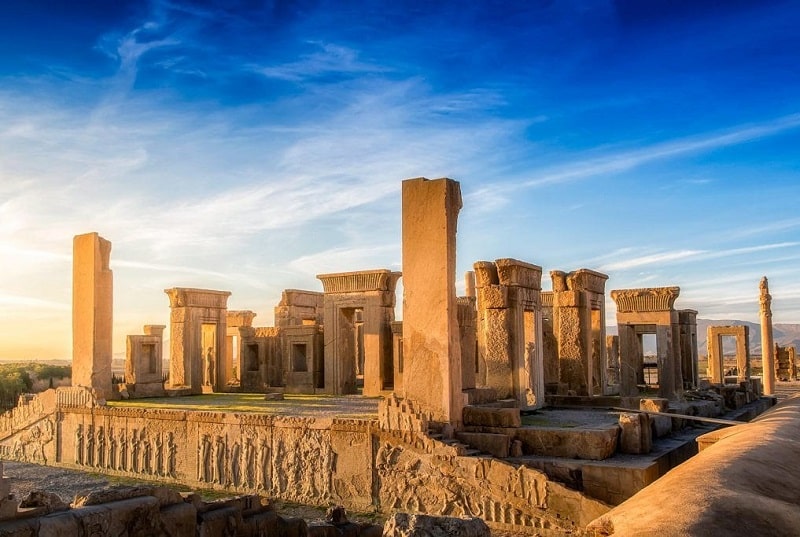
Persepolis embraces the most significant Achaemenid heritage. It is not only an archeological remains but also a fact of the cultural legacies of Persians.
Day 9: Shiraz-Kerman, Iran Women Only Tours Embraces Soft Sandy Heritage
- Fly to Kerman (if available), O/N Kerman.
- Visiting Ganjali Khan Complex, Fath-Abad Garden.
Departing Shiraz we travel to Kerman to visit Ganjali Khan Complex. It is a historical district that Ganjali Khan as the governor of Kerman built to devote himself to public services. The archive of the area includes mosques, a bath, a Bazaar, and a school all contribute to the area’s prosperity. Kerman is well-known for the flavor of Kolompeh. Kolompeh is the special Kermani cooky inside which, is filled with mashed sweet date palm. Kermani women bake Kolompeh in traditional ovens as one of the most popular Persian souvenirs. Soon after, we will have a touch of softness and tenderness of art in a Kermani house manifests a frame of paradise.
Pete feels like to keep a piece of heaven in your house. It is one of the famous handicrafts of Kerman province and the art of creating patterns with hairs is called Ris. The most popular Pate used to cover the grave of Shah Nematullah Vali. Then, we will move to Fathabad Garden. The garden came into existence as an imitation of the Shahzadeh Garden during the Qajar Dynasty.
Overnight Kerman.
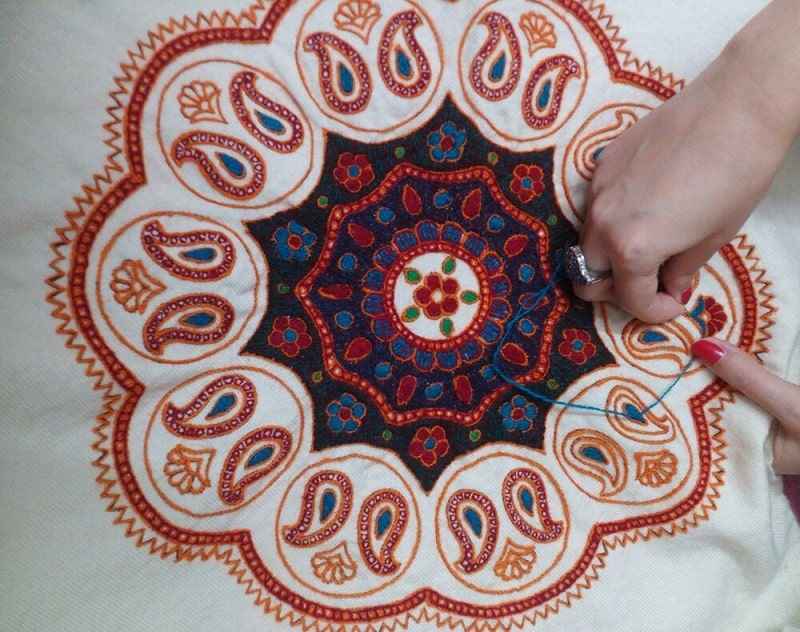
Kermani women are artists whose art is rather crafts, clothing, or architecture. They also present themselves in sweet cooking, rug design, and unique fabric weaving.
Day 10: Kerman, Explore Achaemenid and Sassanid Adobe
- Drive 190 km to Bam Citadel, O/N Kerman.
- Having an Expedition to Shazadeh Mahan Garden, Rayen Castle, and Bam Citadel.
Today, the Iran Women Only Tour takes us outside of Kerman to Bam Citadel. Meanwhile, on the way to Bam, we will visit Shazdeh Mahan Garden. The garden is a true prototype of a Persian garden with a gorgeous mansion. incredibly, trees and facing fountains surrounded Shazdeh Mahan to depict Persian paradise. After that, we will take an expedition to the well-preserved Rayen Castle. The castle is one of the biggest adobe in the center of Lut desert. The date of construction of the castle goes back to the Sassanid era. Then, we will keep our tour to Bam Citadel (UNESCO Heritage), the biggest adobe structure in the world.
Bam has embraced ancient stories since more than 1000 B.C. Achaemenid Empire renovated Bam Citadel to preserve its mysterious and magical glories. The heart of the citadel is the defensive fortress, which includes a residential area, buildings for lodging soldiers, and the governor’s residence. On the other hand, Bazaars, mosques, watchtowers, and gates are other significant constructions. Unfortunately, a late earthquake (2003) destroyed most parts of the citadel. Whereas, archeologists and the government hugely invested in renovating and reconstructing Bam Citadel.
Overnight Kerman.

Bam Citadel displays how ancient Persians adapted their lifestyle by identifying the nature of the Lut Desert in Kerman. Also, how they adjusted their architectural power in Persian relation with the universe.
Day 11: Kerman-Yazd, Iran Women Only Tour Embraces Desert Orchards
- Drive 370 km to Yazd, O/N Yazd.
- Visiting Shahdad Desert, having an expedition to Zein-o-din Caravansary.
Iran Women Only Tour lets us escape from the helter-skelter of the city to the calm and silent virgin nature of the Lut desert (UNESCO Heritage). Our soul flies to the sky and floats softly in a sea of stars. When we look at the galaxy in the evening while the sun caresses the soft sands another world shows itself with all the details in the Lut Desert. Lut Desert is a diverse space in biodiversity from animals with extraordinary physical abilities to unique plants such as Nebkas. Nebkas may be the only inhabitants in the desert who stubbornly strive for life. In addition, Kalut as the sandy hills is the other unique natural element of Lut that describes the identifying environment of Lut. Trees in this region have made a pot out of the plain as the largest found Nebka is around ten meters long and belongs only to the Lut Desert. These trees and hills trape in the soil in the Mahan Region. Mahan embraces the warmest spot in the world, located in the southeast of Kerman province.
Then, we will visit Zein-o-din Caravansary (UNESCO Heritage) on the way to Yazd. The caravansary is one of the 999 Inns for traders along the Silk Road during the Safavid Dynasty. The residence is now an establishment for the lodging and entertaining of travelers.
Overnight Yazd.
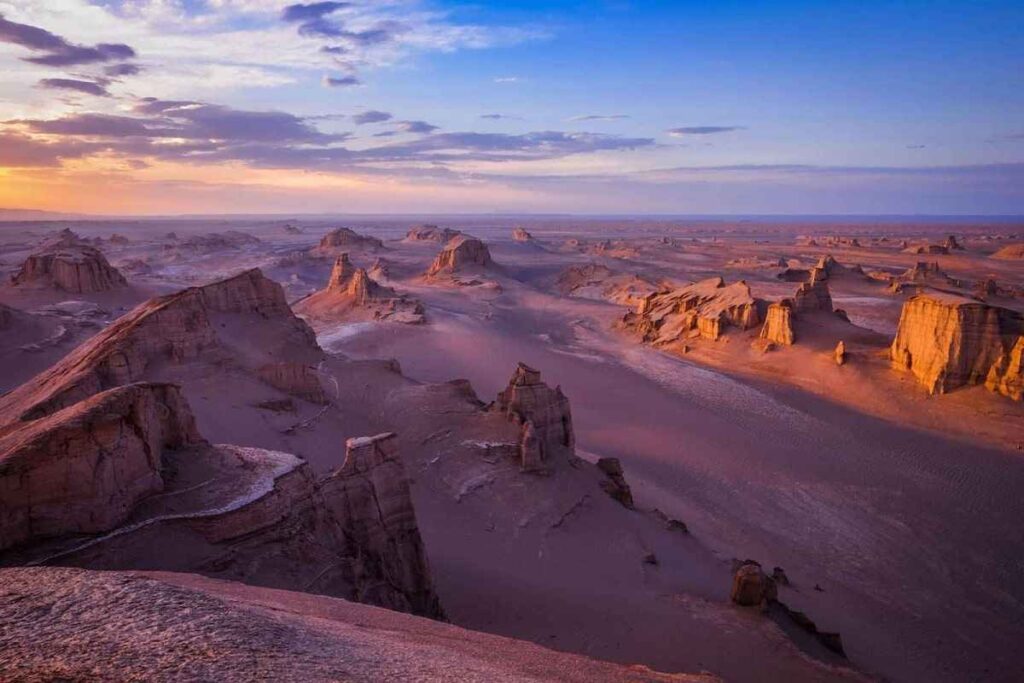
Lut Desert is the hottest and driest area on earth, which shows spectacular far-reaching stony deserts, extensive dune fields, and strong winds in Kerman, Iran.
Day 12: Yazd, Unbelievable Adobe of Iran Women Only Tour
- Visiting Yazd, O/N Yazd.
- Visiting Jame Mosque, Walking in the Historic Area of Fahadan to Lariha House, Visiting Yazd Fire Temple, Amir Chakhmagh Complex, & Dowlat Abad Garden.
Today, the Iran Women Only Tour begins with Yazd Jameh Mosque. There, the brilliance of tilling dazzles eyes next to the highest mosque minarets in the world. Yazd Jameh Mosque depicts harmonious crafts between Islamic and Persian architecture. Also, Cashmere Fabric (Termeh) as an art in warp and weft of cloth is on the way to the mosque. After that, we will walk to the Fahadan Area to explore the brick and mud lifestyle with a particular style of construction. In Fahadan (UNESCO Heritage), customs and traditions direct us to Lariha House. The house helps capture a view of the Yazd lifestyle in a well-decorated location. Lariha House is famous for its architecture of wind-catchers plus archways, plasterwork, and stained-glass windows. Then, we visit the Zoroastrian Fire Temple, which has been continuously burning for around 2500 years.
Next in order of time, Women Only exploration continues to the Amir Chakhmagh Complex. The complex embraces a gorgeous balanced submerged alcove. Then, we will experience the traditional form of athletics which was for training soldiers for warfare in Zourkhaneh (Pahlavani Rituals). Finally, we will taste Yazdi Cake a culinary item that carries the identity of Yazd. It’s a kind of simple, sponge cake designed with Almond slices. The tour ends today with a pleasing atmosphere of the highest wind-catcher in the world, in Dowlat Abad Garden (UNESCO Heritage).
Overnight Yazd.

Dowlat Abad Garden waves at you in adobe in size of a city as an orchard with a delightful ambiance to fresh you in Yazd.
Day 13: Yazd-Isfahan, Aroma of Art in the Heart of Desert
- Drive 170 km to Naein, O/N Naein.
- Having an Expedition to Meybod County (Visiting Abbasi Caravanserai, Water Reservoir, Ice House Building, & Narin Castle).
- Visiting Naein County (Visiting Jame Mosque & Desert Anthropology Museum).
Iran Women Only Tour takes a full-day trip from Yazd to Isfahan with an expedition to Maybod County. In Meybod, we will explore a region that is widely known in terms of architecture and handicrafts. Our visits will include Abbasi Caravanserai which displays how travelers took rest on the way of their business journey. After that, we will walk to a traditional water reservoir that provides safe and clean water in the desert. Soon after, we will visit the Ice House which feeds the county with sufficient ice reminded of winter. The Ice House works based on an evaporation engineering masterpiece since 1000 B.C.
Then, we will visit Narin Castle, which used to be a fortress during existence, dating back to the Achaemenid era. Our exploration continues to Naein County. The county is an ancient region famous for the qanats, handicrafts, and castles. We will visit Naein Jameh Mosque which is one of the first four mosques after the Arab conquest of Persia. After that, we will surf the Desert Anthropology Museum. Then, we travel to Rigareh Qanat-based Water Mill (UNESCO Heritage) to investigate qanat construction since 1000 B.C. in Persia.
Overnight Naein.

Meybod Bricked Ice House is a dome-type refrigerator.
Day 14: Abyaneh, Touch Iran Traditions and History
- Drive 420 Km to IKA and depart Iran.
- Having an expedition to Abyaneh City.
We will have a visit to Abyaneh village on the way to IKA. It is famous for its incredible architecture and colorful fruits such as pomegranate and mulberry. Abyaneh shows us historical traditions and customs along with distinctive habitable buildings. Giveh as a very traditional kind of shoe will amaze us. Giveh is a cotton and wool shoe with wild-bull leather with high comfort. (Today’s itinerary depends on the time of departure)
Depart Iran.
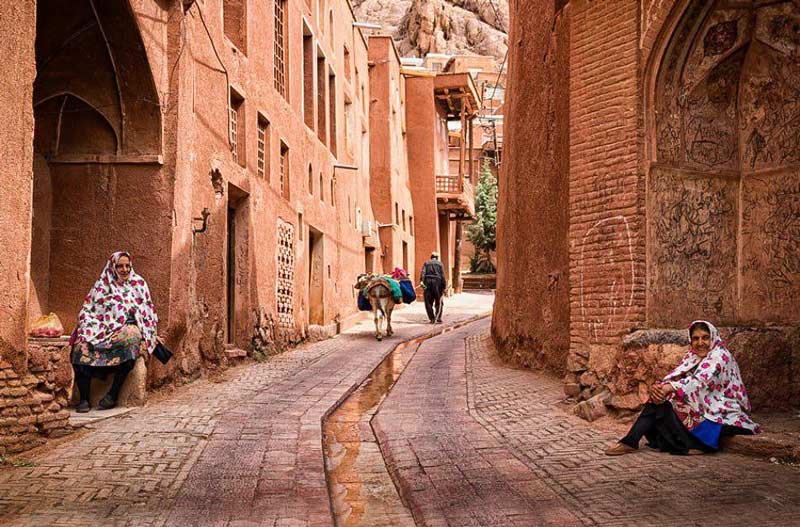
Abyaneh village is a reddish village with an incredible rural lifestyle in Isfahan.
